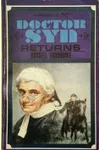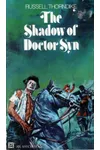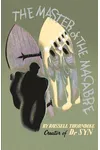Picture a swashbuckling English storyteller who conjured a pirate-vicar to thrill generations—meet Russell Thorndike! Born in 1885, Thorndike was an actor-turned-author whose Doctor Syn novels blended high adventure with eerie smuggling tales on Romney Marsh. His vivid storytelling and knack for weaving history with fiction have kept readers hooked for over a century.
Though less famous than his sister, Dame Sybil Thorndike, Russell carved his own path in literature and theater. His life was as colorful as his stories, filled with wartime valor, stage performances, and a passion for the pen that birthed a literary legend.
The Making of Russell Thorndike
Arthur Russell Thorndike was born on February 6, 1885, in Rochester, Kent, where his father served as a canon at the cathedral. Educated at St George’s School, Windsor Castle, and a chorister at its chapel, young Russell soaked up the historical and cultural richness that later flavored his writing. Initially drawn to acting, he and Sybil joined Ben Greet’s Academy in 1903, touring North America by 1905. But after serving in World War I, where he was severely wounded at Gallipoli, Thorndike’s heart turned to writing, inspired by his love for adventure and the haunting landscapes of Kent.
Russell Thorndike’s Unforgettable Stories
Thorndike’s most enduring creation is the Doctor Syn series, starting with Doctor Syn: A Tale of the Romney Marsh (1915). This novel introduced Christopher Syn, a vicar by day and the masked Scarecrow of Romney Marsh by night, leading a smuggling ring with cunning and flair. The book’s mix of historical fiction, piracy, and supernatural chills captivated readers, spawning six sequels, including Doctor Syn on the High Seas (1935) and The Shadow of Doctor Syn (1944). These tales follow Syn’s transformation from a betrayed clergyman to a daring pirate, blending swashbuckling action with moral complexity.
Beyond Doctor Syn, Thorndike penned other works like The Slype (1927), a gothic mystery set in a cathedral town, and The Master of the Macabre (1946), a collection of eerie tales. His style was vivid and atmospheric, with a knack for crafting flawed, charismatic heroes and settings that pulsed with danger and intrigue. Thorndike’s love for Romney Marsh’s misty dykes and smuggling lore gave his stories a unique, almost tangible sense of place.
His theatrical background also shaped his writing, infusing scenes with dramatic flair and dialogue that leaped off the page. Whether it was Syn outwitting royal militias or ghostly riders circling the marshes, Thorndike’s narratives were cinematic, no surprise given their later adaptations into films like Doctor Syn (1937) and Disney’s The Scarecrow of Romney Marsh (1963).
Why Russell Thorndike Matters
Russell Thorndike’s impact lies in his ability to craft timeless adventure stories that resonate across generations. The Doctor Syn series, often compared to a 1700s Batman, pioneered the anti-hero archetype in historical fiction, influencing later adventure and crime writers. His novels also preserved the folklore of Romney Marsh, turning its smuggling history into a literary treasure. Adaptations in film, TV, and theater have kept Syn’s legacy alive, introducing new audiences to Thorndike’s thrilling world.
Though not a household name, Thorndike’s work endures for its blend of heart-pounding action and rich historical texture. His stories remind us that even in quiet corners of England, tales of rebellion and redemption can spark the imagination. His influence lingers in the enduring appeal of masked heroes and the allure of the open sea.
- Born: February 6, 1885, Rochester, Kent
- Died: November 7, 1972, Dymchurch, Kent
- Key Works: Doctor Syn (1915), Doctor Syn on the High Seas (1935), The Slype (1927)
- Notable Fact: Thorndike played Smee in ten stage revivals of Peter Pan.
Ready for a literary adventure? Snag Doctor Syn: A Tale of the Romney Marsh and dive into Russell Thorndike’s world of pirates, smugglers, and misty marshes!

















